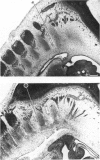Abstract
Serial sections of 108 human embryos from stage 11 to stage 23 were investigated, and 33 reconstructions were prepared. The existence of 4 occipital somites was confirmed. The important developmental distinction between axial (central) and lateral components obtains in the occipital as well as in the vertebral region. The lateral occipital components begin to show dense areas as the cervical region is approached. The lateral occipital and vertebral components arise in registration with the initial sclerotomes. In both the occipital and the vertebral region the related nerves and intersegmental arteries traverse the loose areas of the sclerotomes. The axial occipital region is not segmented, whereas the cervical components develop from perinotochordal loose areas. Three complete centra (known as XYZ) develop in the atlanto-axial region, although they are related to only 2 1/2 sclerotomes and only 2 neural arches. The height of the XYZ complex equals that of 3 centra elsewhere, and not 2 1/2, as previously maintained. The experimental findings in the occipitocervical region of the chick embryo show both similarities to, as well as differences from, the data for the human embryo. A scheme showing the early development of the entire vertebral column is included.
Full text
PDF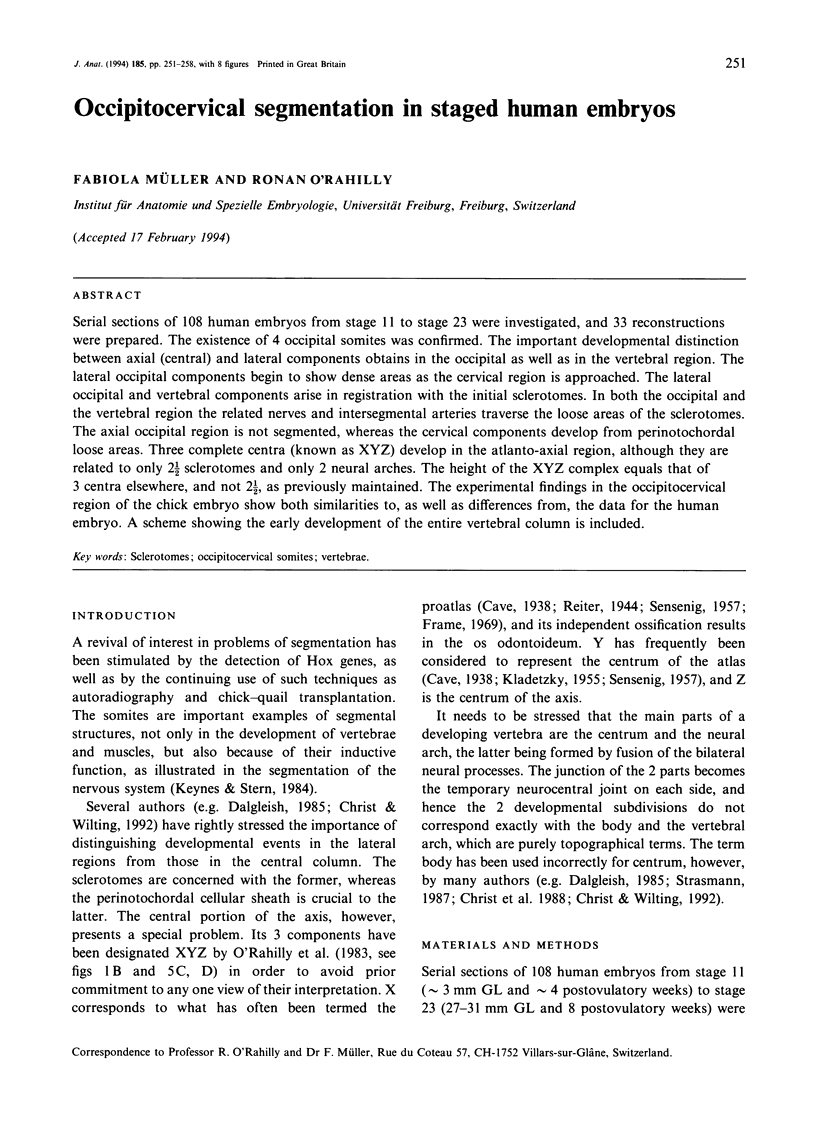
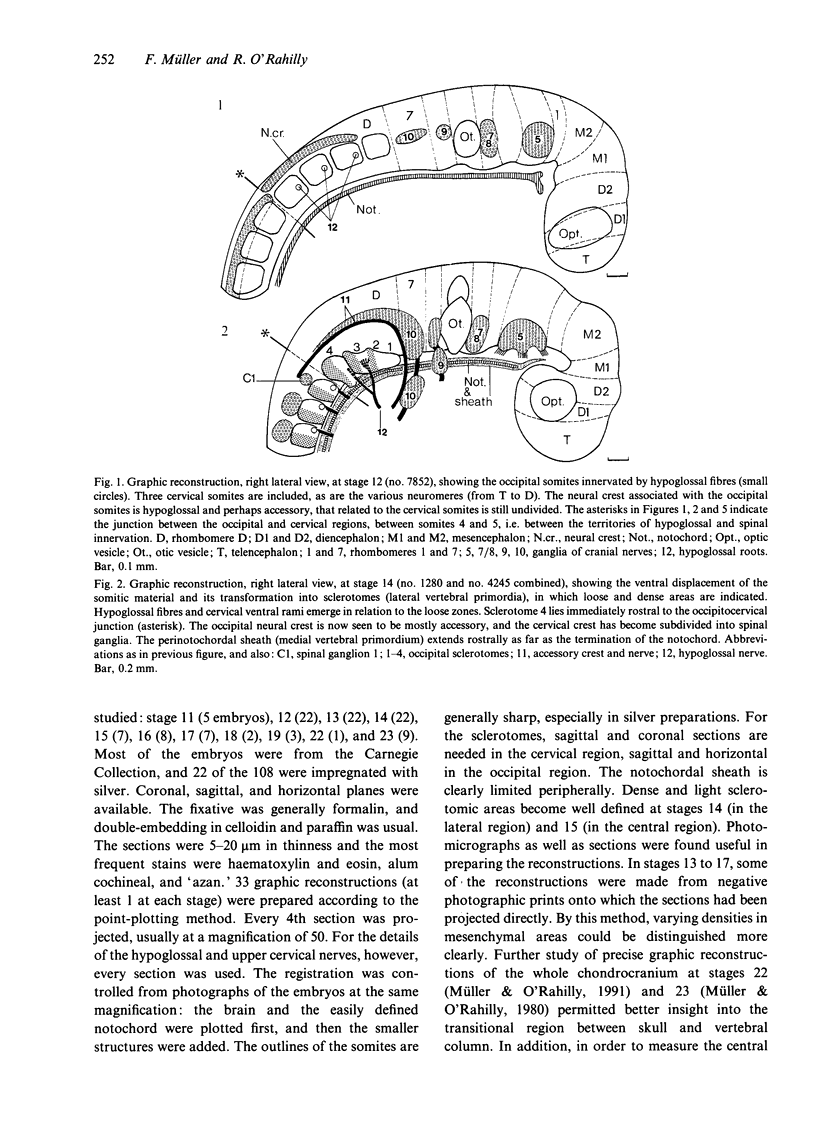
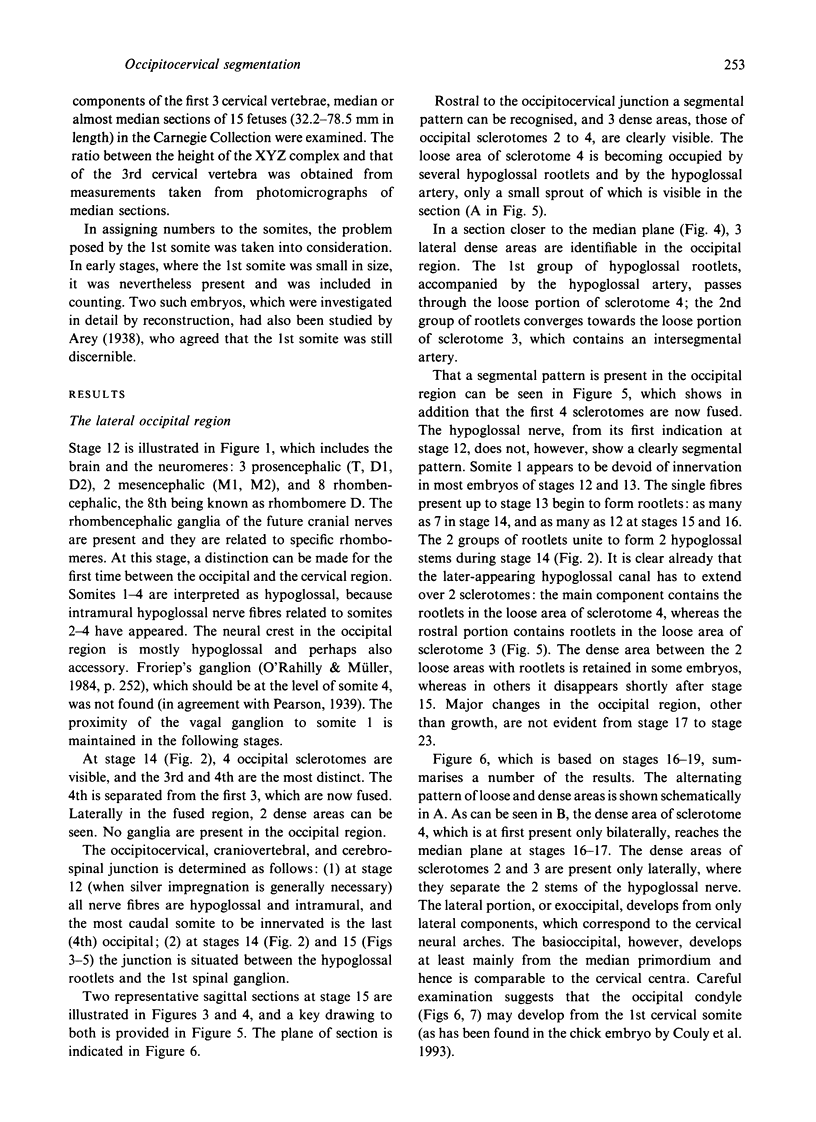
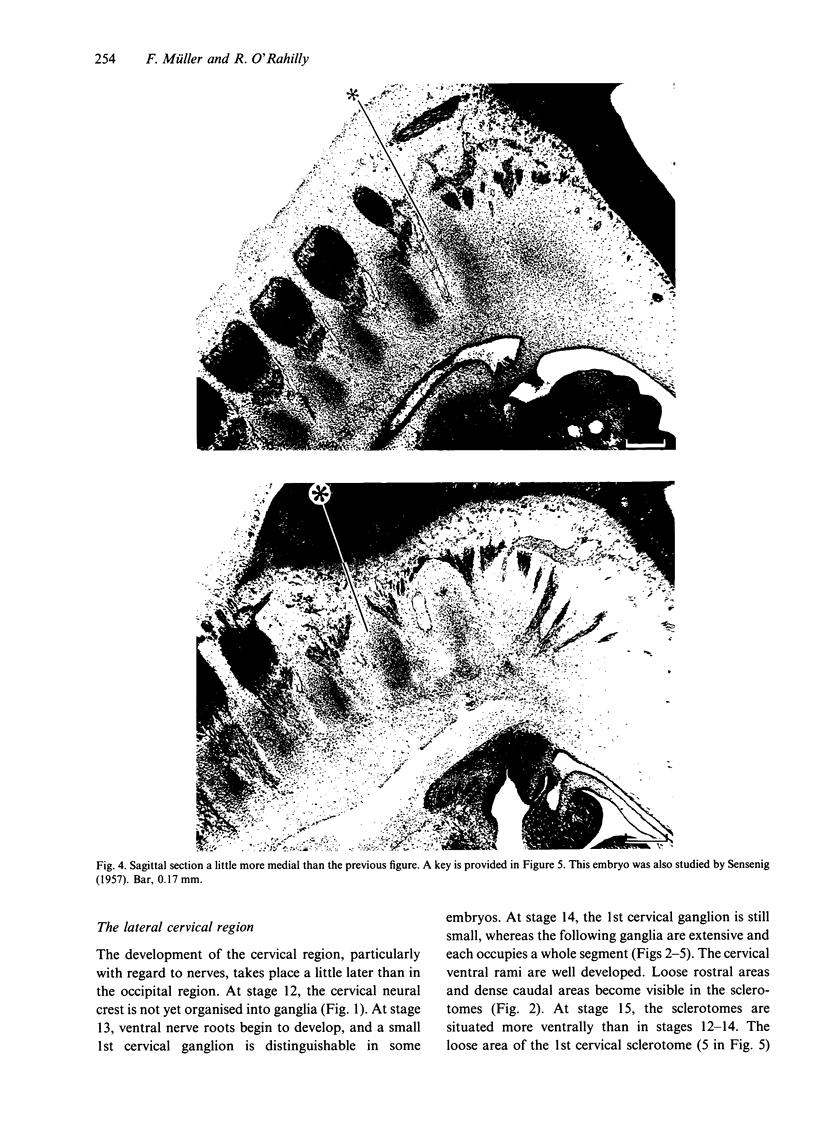
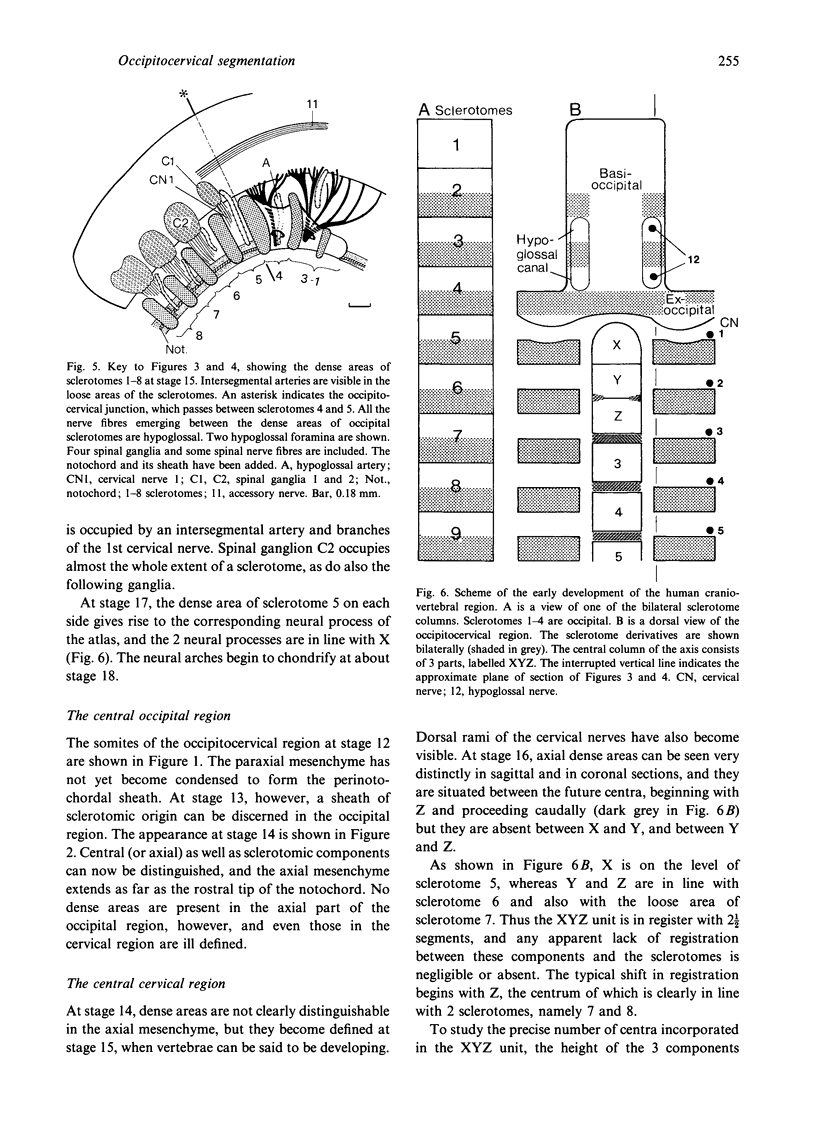
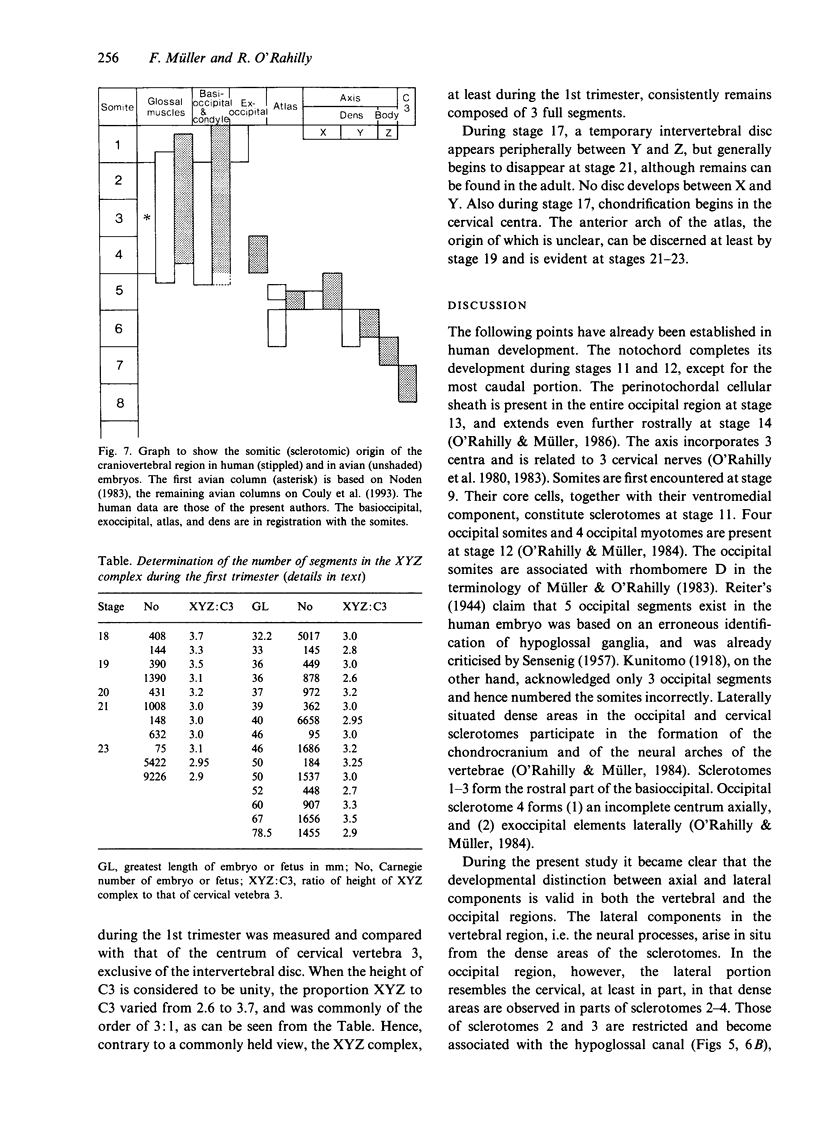
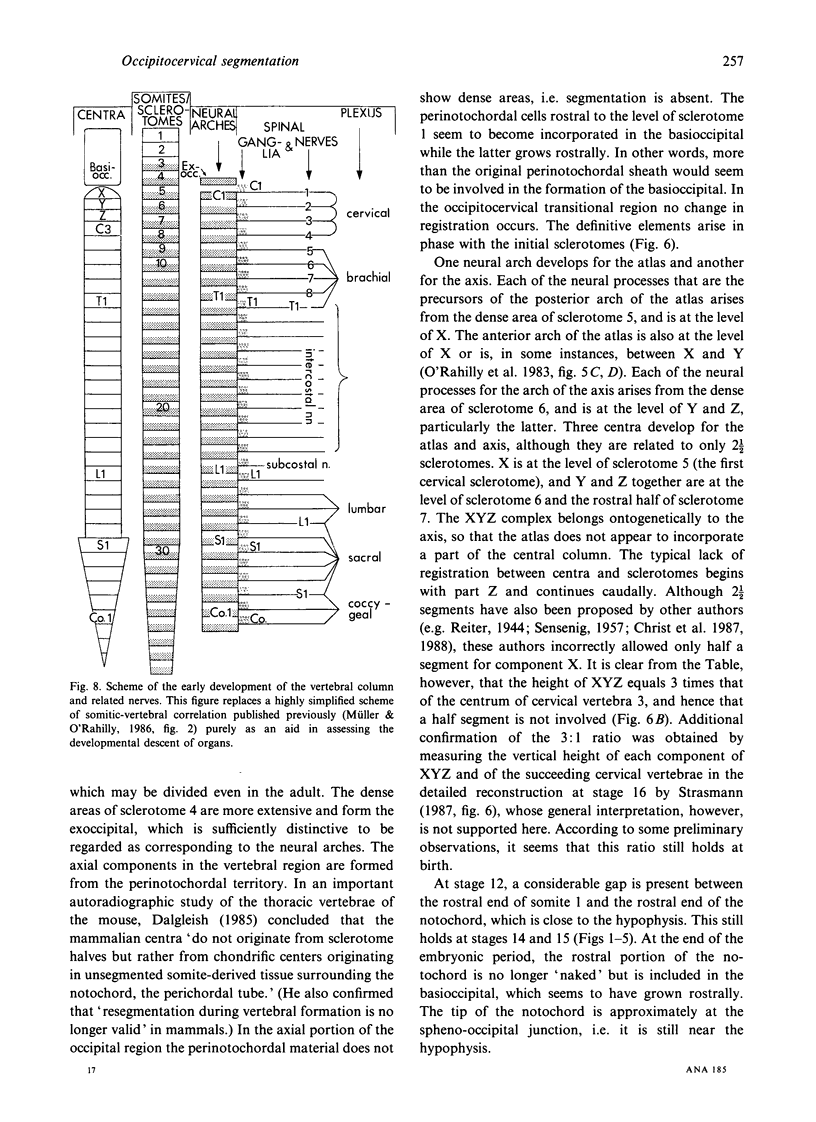
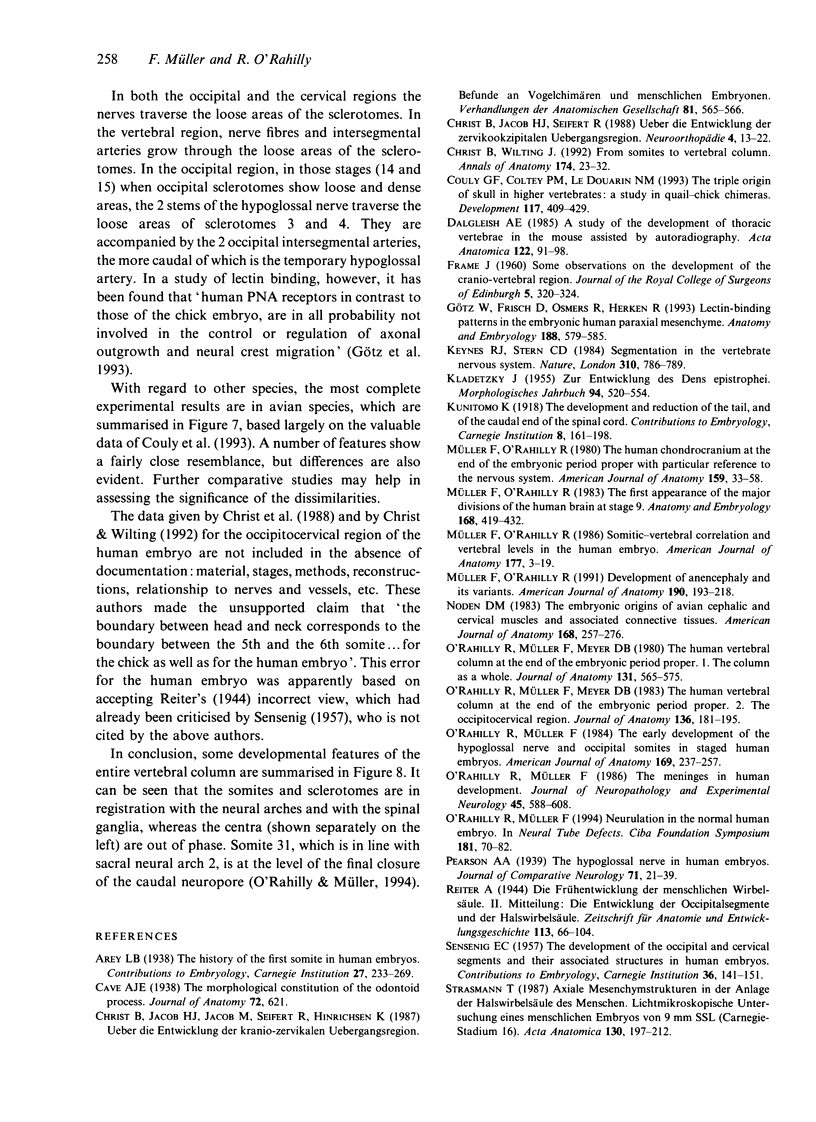
Images in this article
Selected References
These references are in PubMed. This may not be the complete list of references from this article.
- Christ B., Wilting J. From somites to vertebral column. Ann Anat. 1992 Feb;174(1):23–32. doi: 10.1016/s0940-9602(11)80337-7. [DOI] [PubMed] [Google Scholar]
- Couly G. F., Coltey P. M., Le Douarin N. M. The triple origin of skull in higher vertebrates: a study in quail-chick chimeras. Development. 1993 Feb;117(2):409–429. doi: 10.1242/dev.117.2.409. [DOI] [PubMed] [Google Scholar]
- Dalgleish A. E. A study of the development of thoracic vertebrae in the mouse assisted by autoradiography. Acta Anat (Basel) 1985;122(2):91–98. doi: 10.1159/000145988. [DOI] [PubMed] [Google Scholar]
- Götz W., Frisch D., Osmers R., Herken R. Lectin-binding patterns in the embryonic human paraxial mesenchyme. Anat Embryol (Berl) 1993 Dec;188(6):579–585. doi: 10.1007/BF00187013. [DOI] [PubMed] [Google Scholar]
- Keynes R. J., Stern C. D. Segmentation in the vertebrate nervous system. 1984 Aug 30-Sep 5Nature. 310(5980):786–789. doi: 10.1038/310786a0. [DOI] [PubMed] [Google Scholar]
- Müller F., O'Rahilly R. Development of anencephaly and its variants. Am J Anat. 1991 Mar;190(3):193–218. doi: 10.1002/aja.1001900302. [DOI] [PubMed] [Google Scholar]
- Müller F., O'Rahilly R. Somitic-vertebral correlation and vertebral levels in the human embryo. Am J Anat. 1986 Sep;177(1):3–19. doi: 10.1002/aja.1001770103. [DOI] [PubMed] [Google Scholar]
- Müller F., O'Rahilly R. The first appearance of the major divisions of the human brain at stage 9. Anat Embryol (Berl) 1983;168(3):419–432. doi: 10.1007/BF00304278. [DOI] [PubMed] [Google Scholar]
- Müller F., O'Rahilly R. The human chondrocranium at the end of the embryonic period, proper, with particular reference to the nervous system. Am J Anat. 1980 Sep;159(1):33–58. doi: 10.1002/aja.1001590105. [DOI] [PubMed] [Google Scholar]
- Noden D. M. The embryonic origins of avian cephalic and cervical muscles and associated connective tissues. Am J Anat. 1983 Nov;168(3):257–276. doi: 10.1002/aja.1001680302. [DOI] [PubMed] [Google Scholar]
- O'Rahilly R., Muller F., Meyer D. B. The human vertebral column at the end of the embryonic period proper. 1. The column as a whole. J Anat. 1980 Oct;131(Pt 3):565–575. [PMC free article] [PubMed] [Google Scholar]
- O'Rahilly R., Müller F., Meyer D. B. The human vertebral column at the end of the embryonic period proper. 2. The occipitocervical region. J Anat. 1983 Jan;136(Pt 1):181–195. [PMC free article] [PubMed] [Google Scholar]
- O'Rahilly R., Müller F. Neurulation in the normal human embryo. Ciba Found Symp. 1994;181:70–89. doi: 10.1002/9780470514559.ch5. [DOI] [PubMed] [Google Scholar]
- O'Rahilly R., Müller F. The early development of the hypoglossal nerve and occipital somites in staged human embryos. Am J Anat. 1984 Mar;169(3):237–257. doi: 10.1002/aja.1001690302. [DOI] [PubMed] [Google Scholar]
- O'Rahilly R., Müller F. The meninges in human development. J Neuropathol Exp Neurol. 1986 Sep;45(5):588–608. [PubMed] [Google Scholar]
- Strasmann T. Axiale Mesenchymstrukturen in der Anlage der Halswirbelsäule des Menschen. Lichtmikroskopische Untersuchung eines menschlichen Embryos von 9 mm SSL (Carnegie-Stadium 16). Acta Anat (Basel) 1987;130(3):197–212. [PubMed] [Google Scholar]



